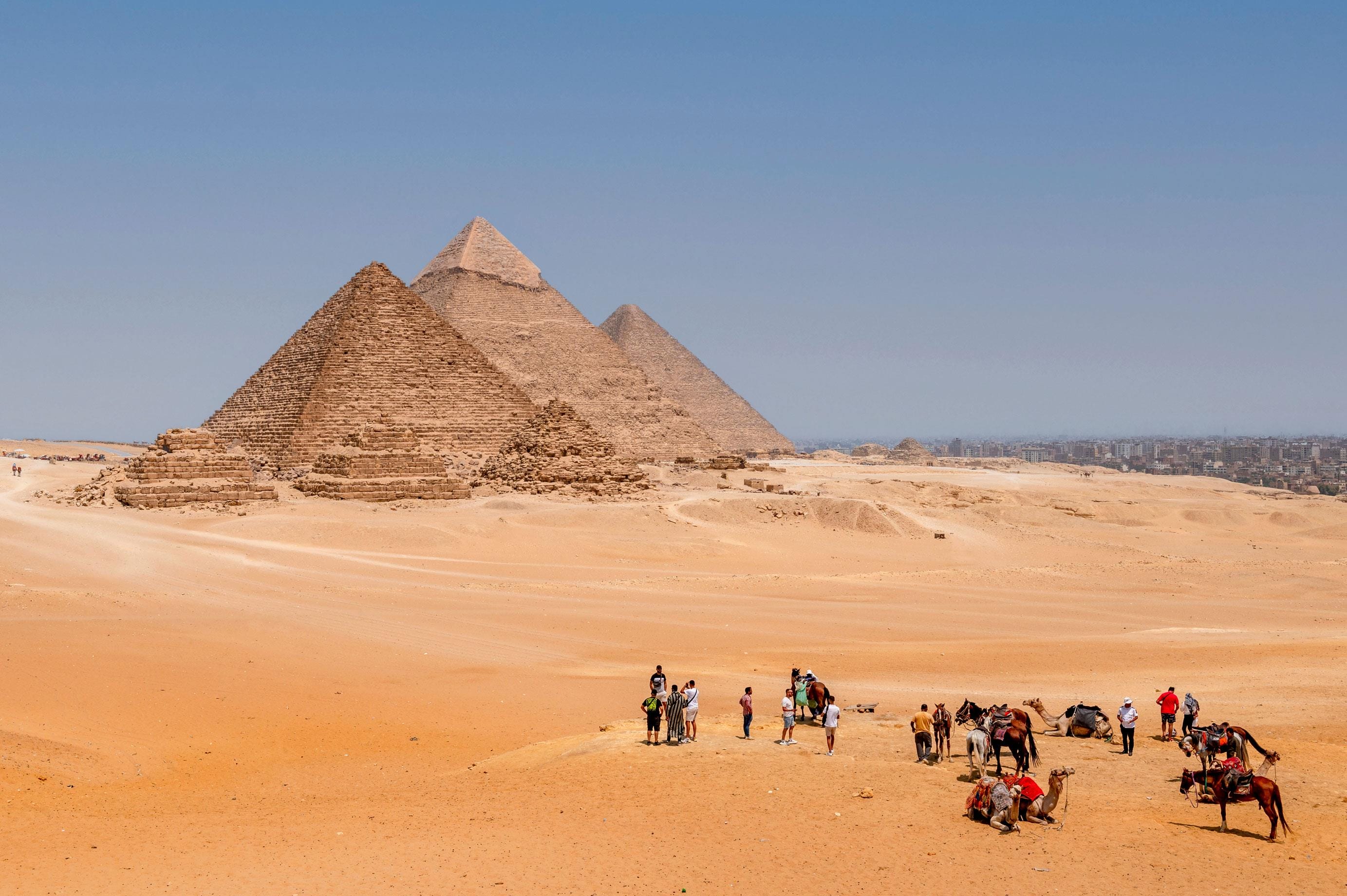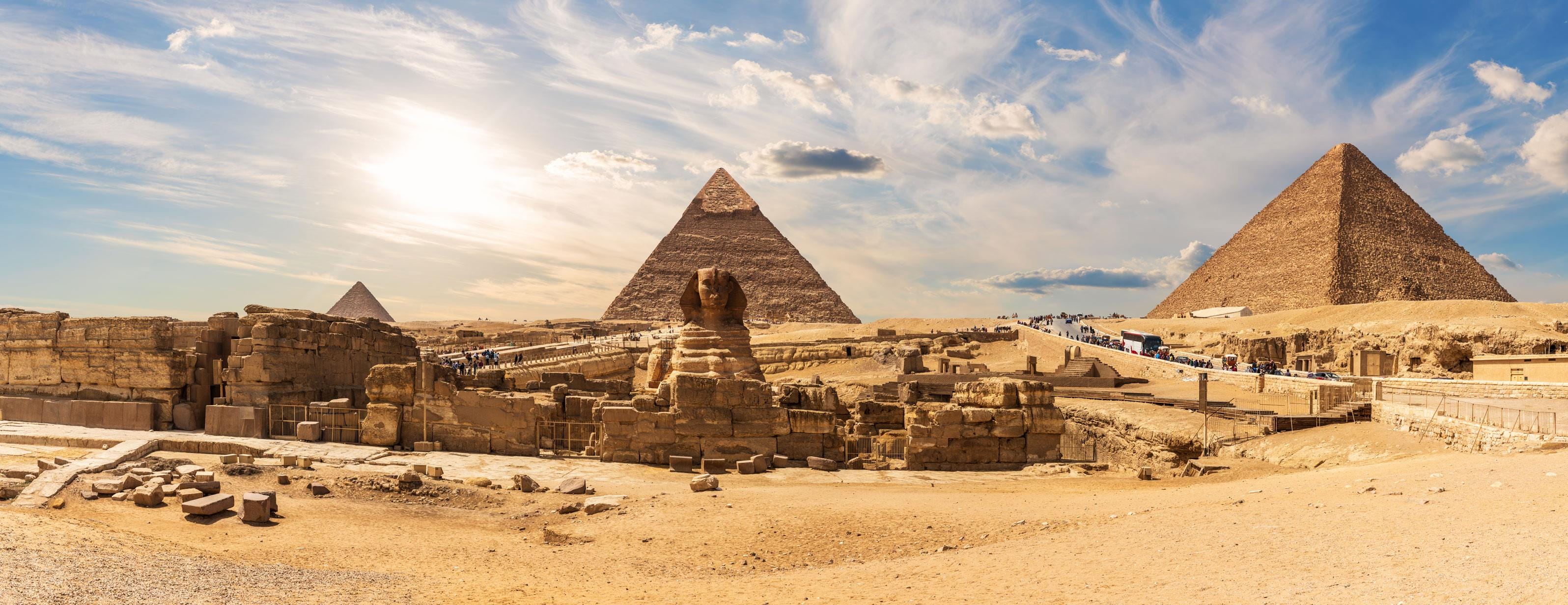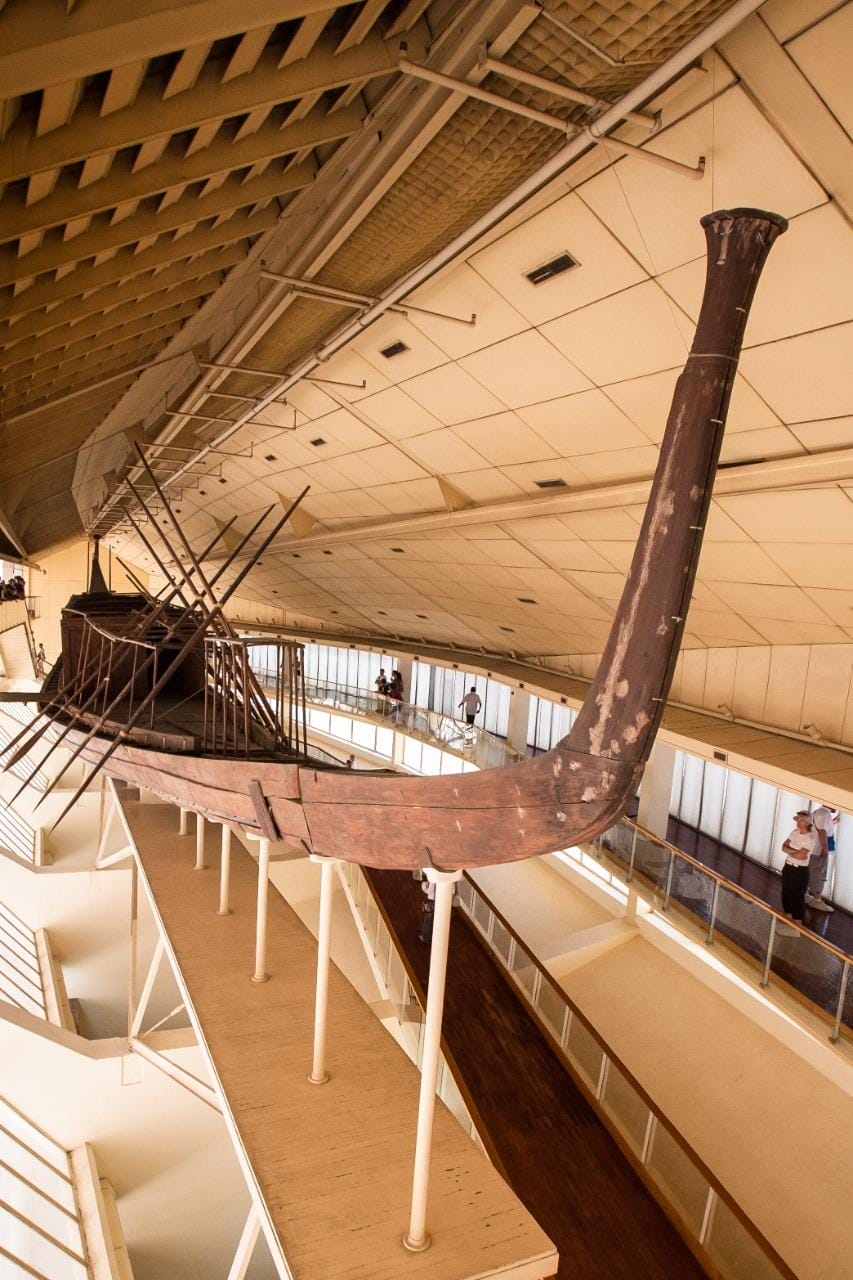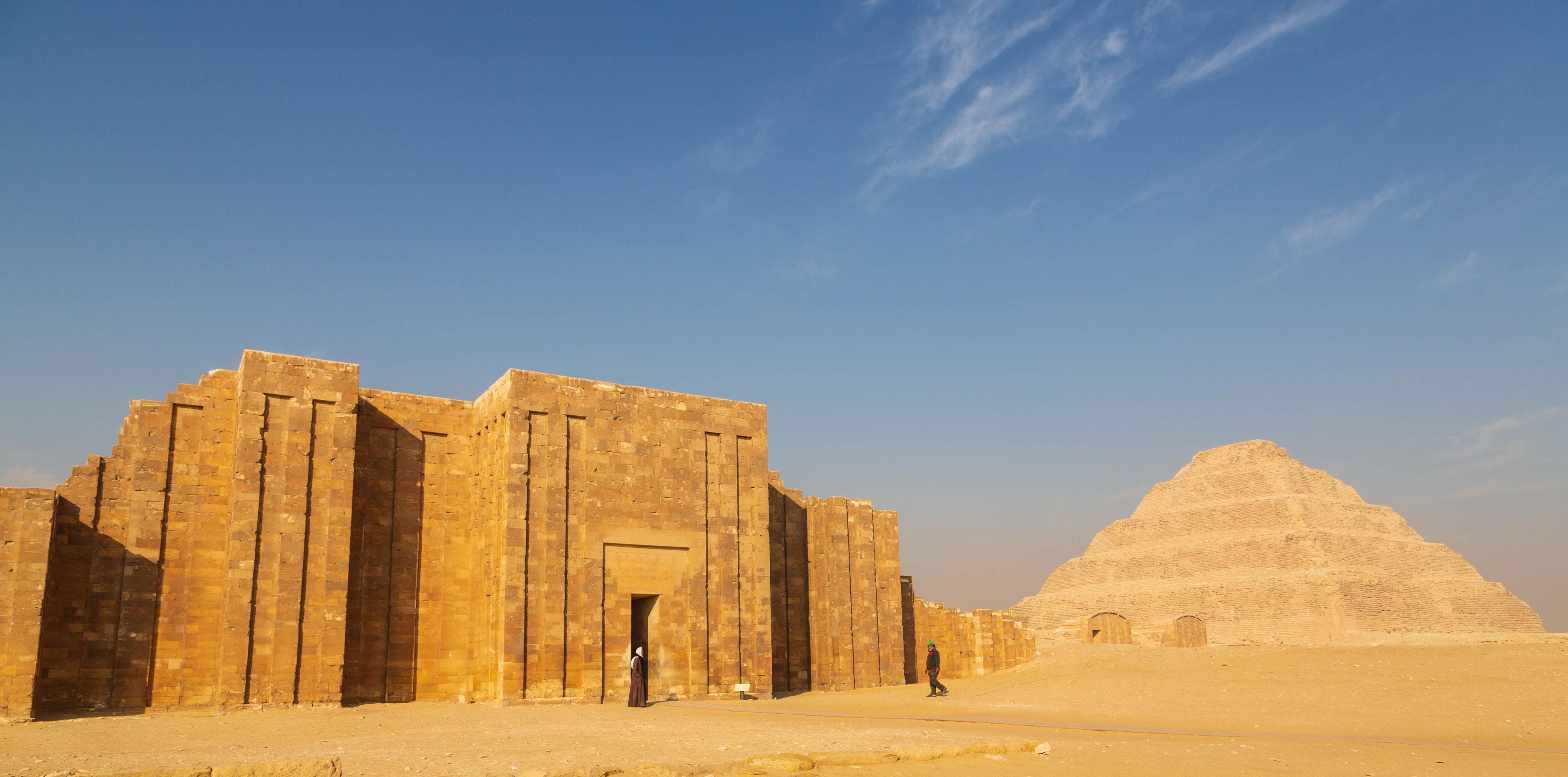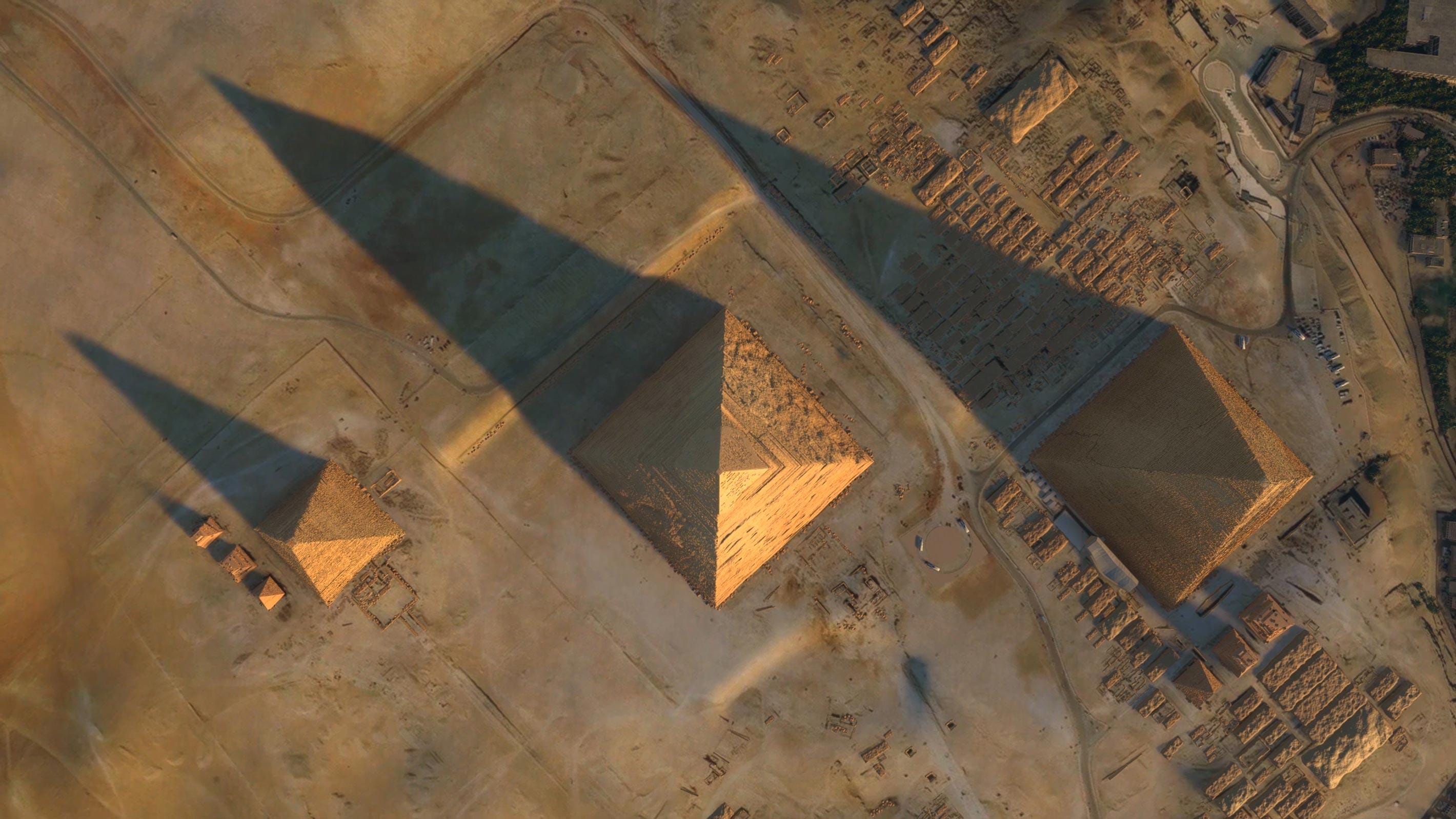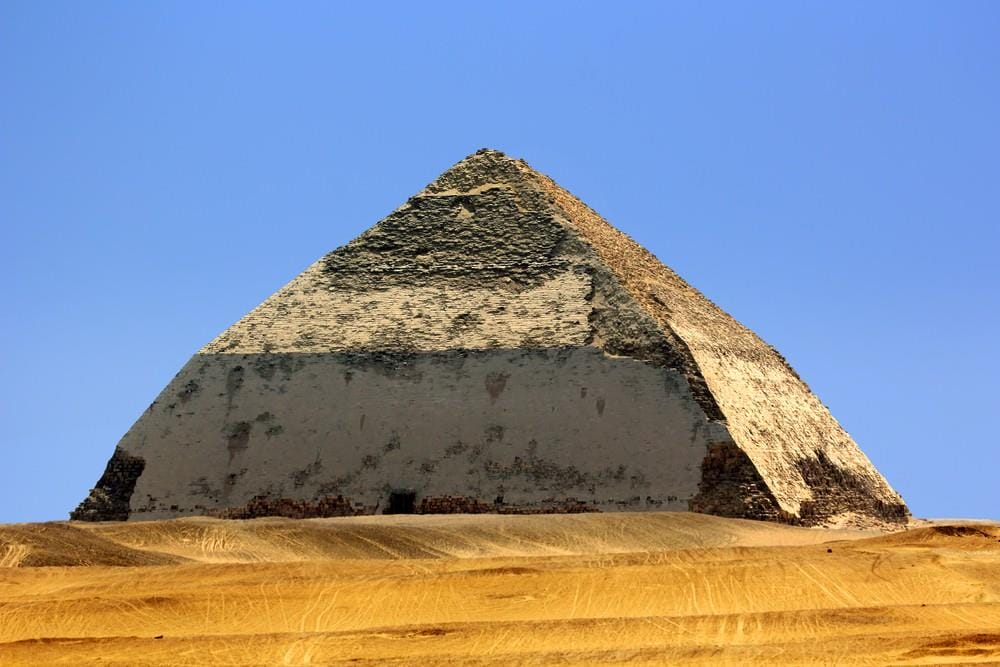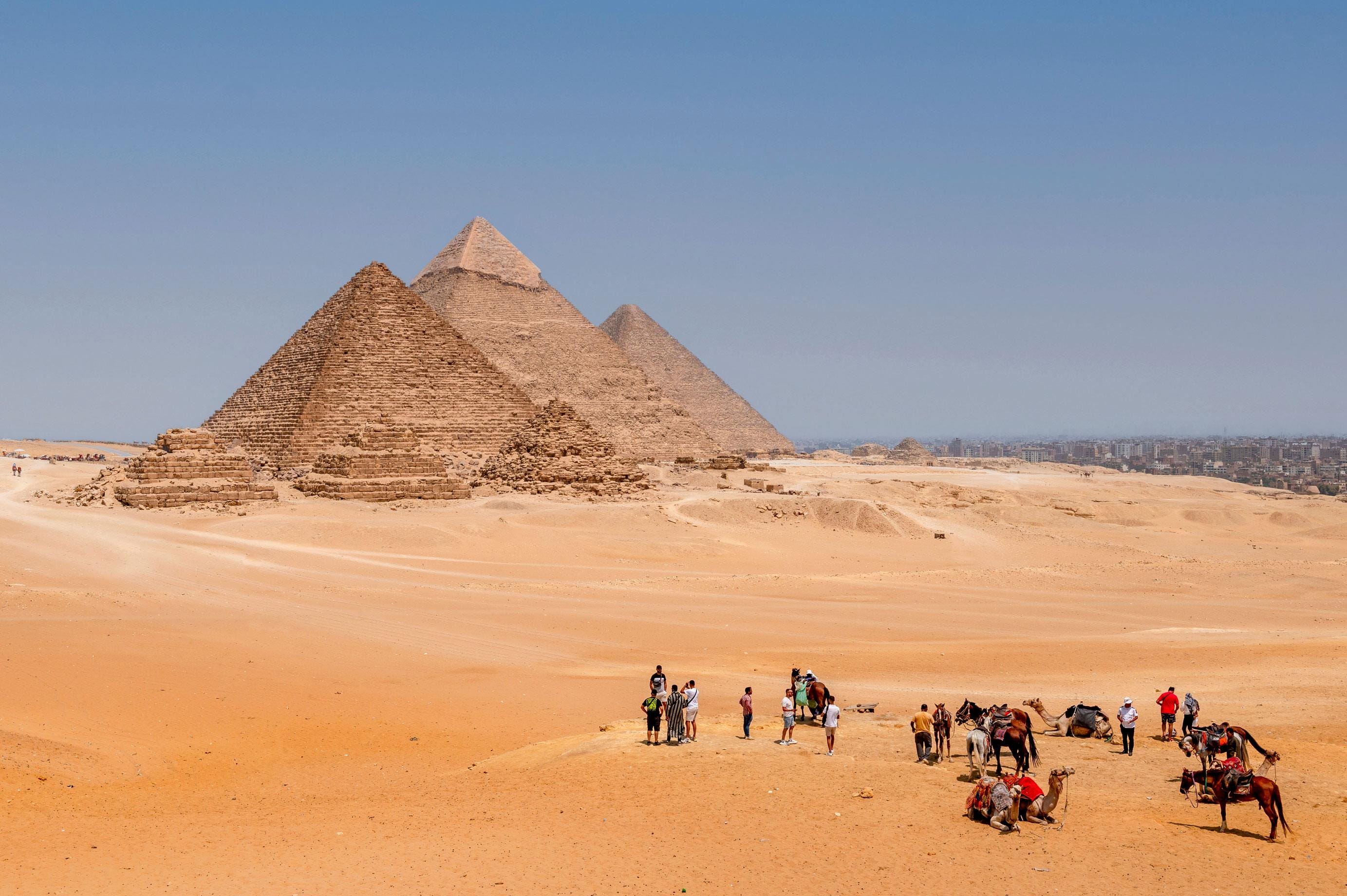Giza & Ancient Wonders
The desert west of Greater Cairo was once the chosen spot for all the necropolis of Memphis and is a designated UNESCO World Heritage Site overflowing with archaeological sites, wonderous temples, and monumental structures steeped in historical significance. Behold the might of the Giza pyramids and set off on a deep exploration of history from north to south, visiting the beginnings of pyramid construction and marveling at some iconic structures that predate the Great Pyramid in Giza.
The Great Sphinx
This enormous and regal statue distinguishes Khafre’s pyramid complex from all others. It is completely unique. Known as one of the world’s largest sculptures, this incredible statue was carved out of the limestone bedrock and is located beside the Valley Temple leading to King Khafre’s mortuary temple and pyramid. The sphinx was built in a clear demonstration of power, with its face bearing a striking resemblance to the king’s, adorned with a royal headdress on the body of a lion.
Don’t Miss
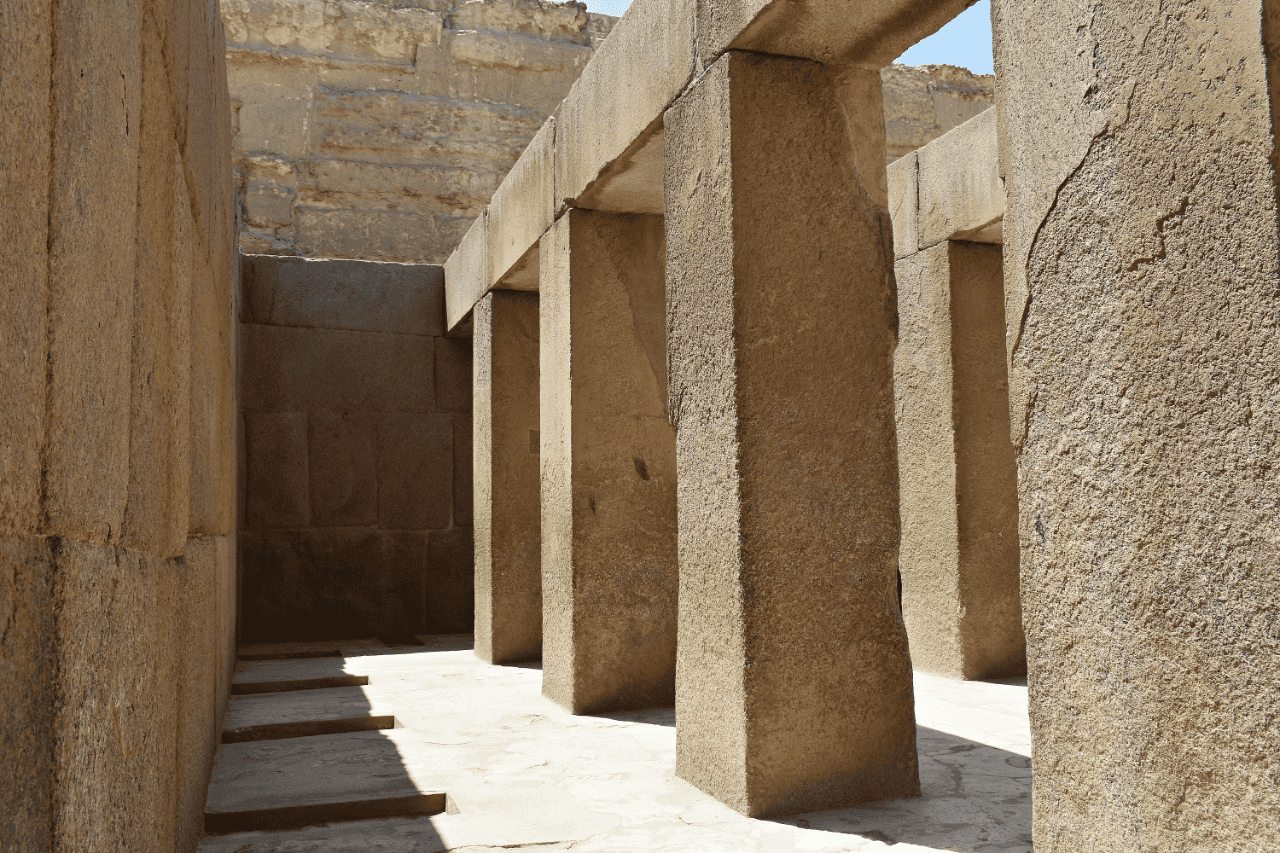
Khafre’s Valley Temple
On your way through this temple to see the Great Sphinx, take a second to admire the massive stone blocks that make up its walls.
Grand Egyptian Museum (Opening soon)
Prepare to be blown away by the world’s largest museum, dedicated to one civilization, just a short ride away from the Giza Plateau. This monumental modern museum, devoted to preserving and celebrating ancient Egyptian civilization, is a feat of both engineering and curation, containing 50,000 of ancient Egypt’s prized possessions with state-of-the-art interactive and innovative storytelling. Upon entry, you’ll be greeted by the first obelisk to ever be suspended in mid-air. Make your way through the atrium and marvel at the colossal statue of Ramesses II, which was moved from Cairo’s Ramesses Square, then climb the Grand Staircase flanked by enormous statues of Egypt’s former kings and queens.
Don’t Miss
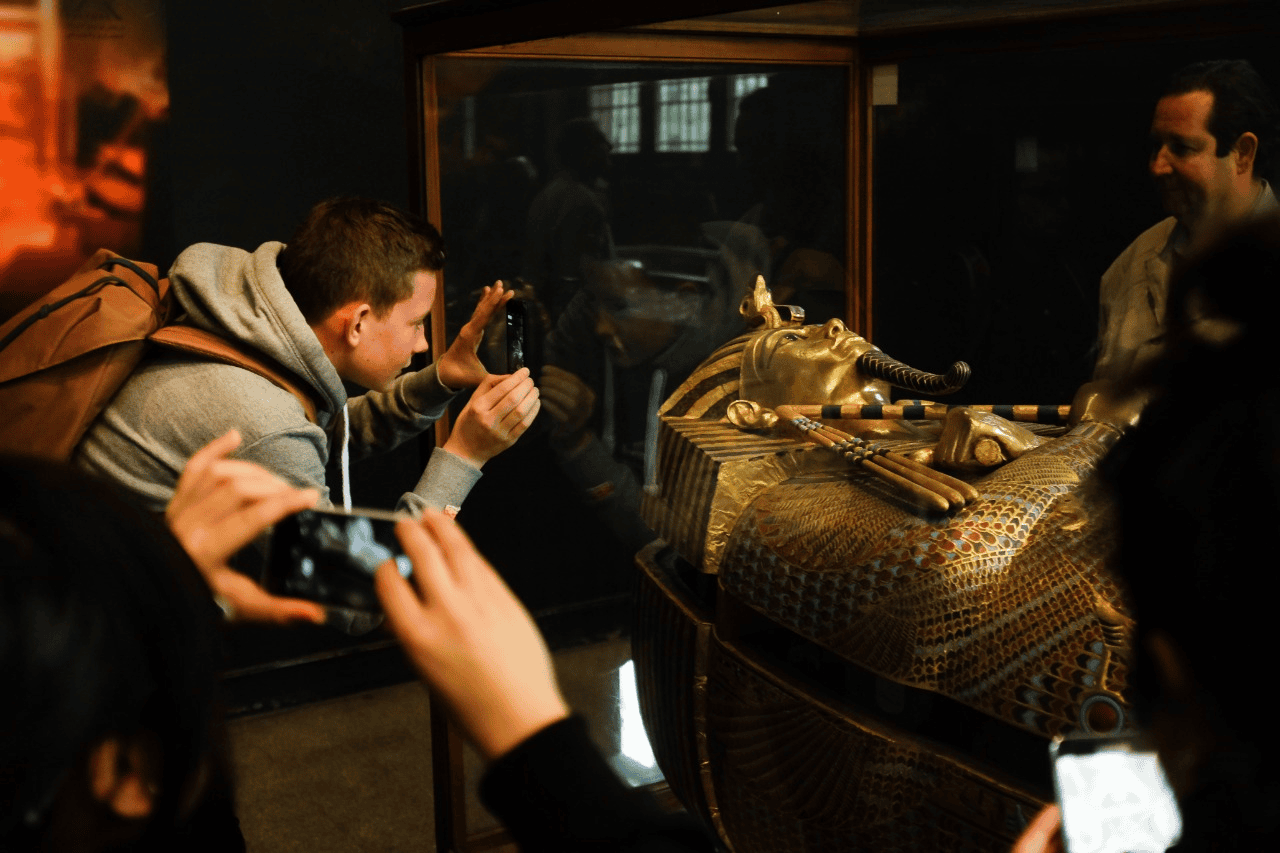
King Tutankhamun’s famous Funerary Mask and treasures
The full collection will be on permanent display for the first time since the discovery of his tomb in 1922. Over 5,000 items from the tomb will be showcased, including three coffins, the four shrines that contained them, ornate alabaster vessels, jewelry, flutes, and chariots.
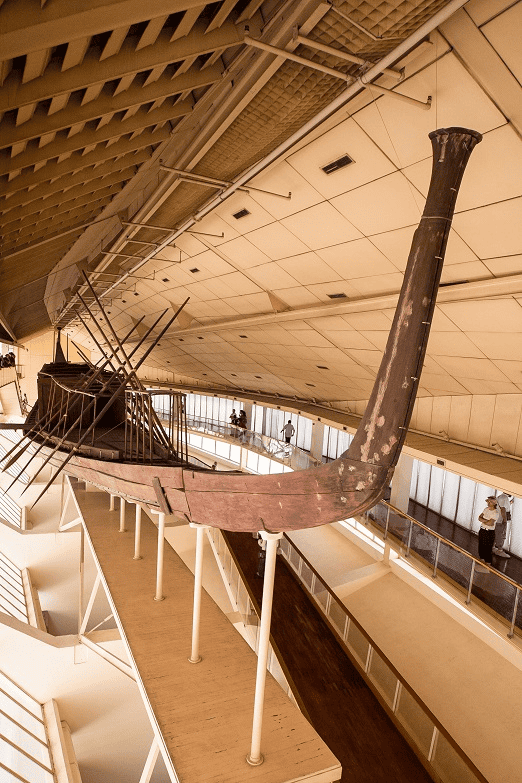
Khufu’s Boat
One of the largest, oldest, and most important wooden antiquities in human history. Perfectly reconstructed to its former grandeur, this is one of two ships discovered inside pits on the south side of the Great Pyramid in a dismantled state.
Tomb of Meresankh III
If you feel like extending your exploration of the plateau beyond the Pyramids and the Sphinx, there is plenty to see. Stop by the Tomb of Queen Meresankh III, who was most likely the wife of Khafre and granddaughter of Khufu, to see some of the best-preserved wall reliefs on the plateau. These scenes depict an array of activities from everyday life, including bread baking, beer brewing, animal rearing, craft making, and the sculpting of statues.
The Eastern and Western Cemeteries include the tombs of members of the royal family and high-ranking nobles. Most of the tombs in the Eastern Cemetery were intended for the pharaoh’s closest relatives, while the Western Cemetery was reserved for elite noblemen, including Hemiunu, who oversaw the building of the Great Pyramid.
Saqqara
Fancy going even further back into the records of time and seeing something more ancient than the Giza pyramids? A short 20 km drive south of the Giza Plateau, you’ll find one of the oldest and most iconic stone monuments known in history: the Step Pyramid. But that is not all Saqqara has to offer. The necropolis is also home to the vast underground galleries in which the sacred Apis bulls were buried. Saqqara served as an important location for non-royal burials and cult ceremonies for over 3,000 years.
Step Pyramid Complex of Djoser
Built around 120 years before the famous Giza Pyramids, King Djoser’s step pyramid is composed of six stacked layers, thus creating the stepped effect. This early design led to more polished and perfectly triangular-shaped pyramid designs in later dynasties.
The Saqqara pyramid represents the birth of pyramid building and marks an important turning point in ancient Egyptian funerary monuments. Before Djoser’s reign, royal and elite Egyptians were buried in rectangular brick structures called mastabas (Arabic for bench, so called due to their shape) built over the underground tomb.
Don’t Miss
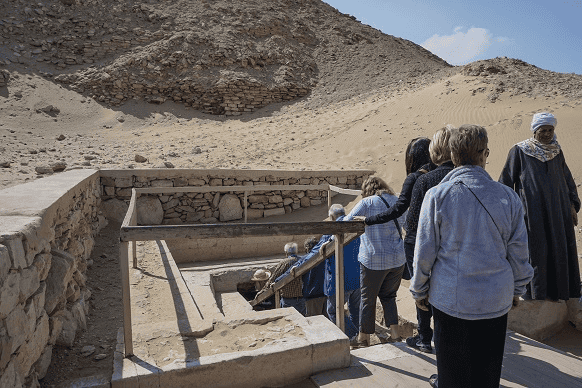
The Pyramid of Teti
The first king of the 6th Once a beautiful pyramid, it resembles a natural hill today, but don’t let that fool you: descend underground and marvel at the hieroglyphic texts carved on the walls that helped the king reach the afterlife. The Tombs of Mereruka and Kagemni, two noblemen that were buried near the pyramid of their king, contain illuminating and vivid scenes on the tomb walls depicting activities from everyday life, such as cattle herding, harpooning hippos, and fishing expeditions.
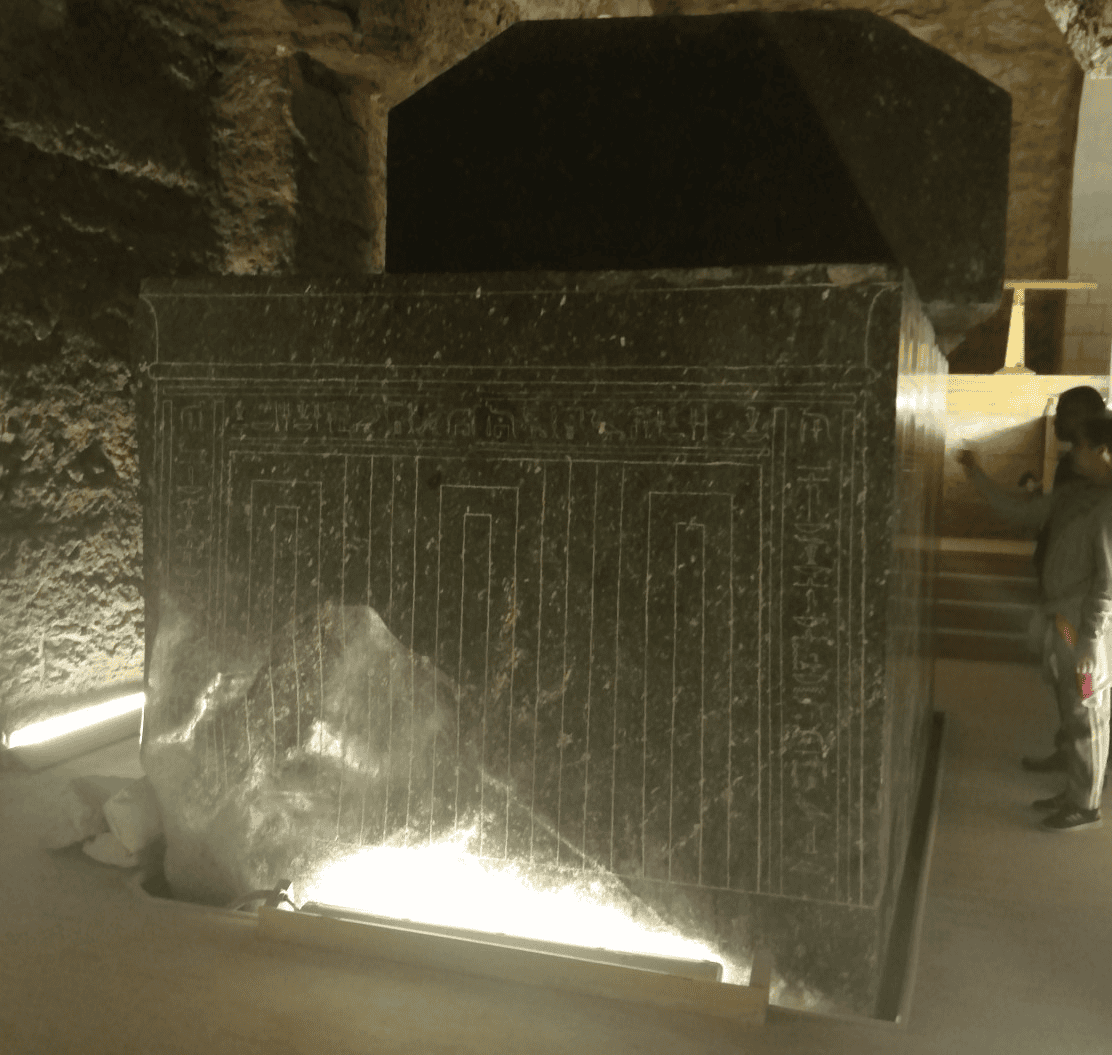
The Serapeum
The underground galleries containing the burials of the sacred Apis bulls. An avenue of sphinxes, now vanished, led to long corridors that once housed the mummified remains of the bulls. Marvel at the truly massive granite sarcophagi in which they were buried, and don’t miss the dizzying number of niches that once contained stelae left there by the faithful.
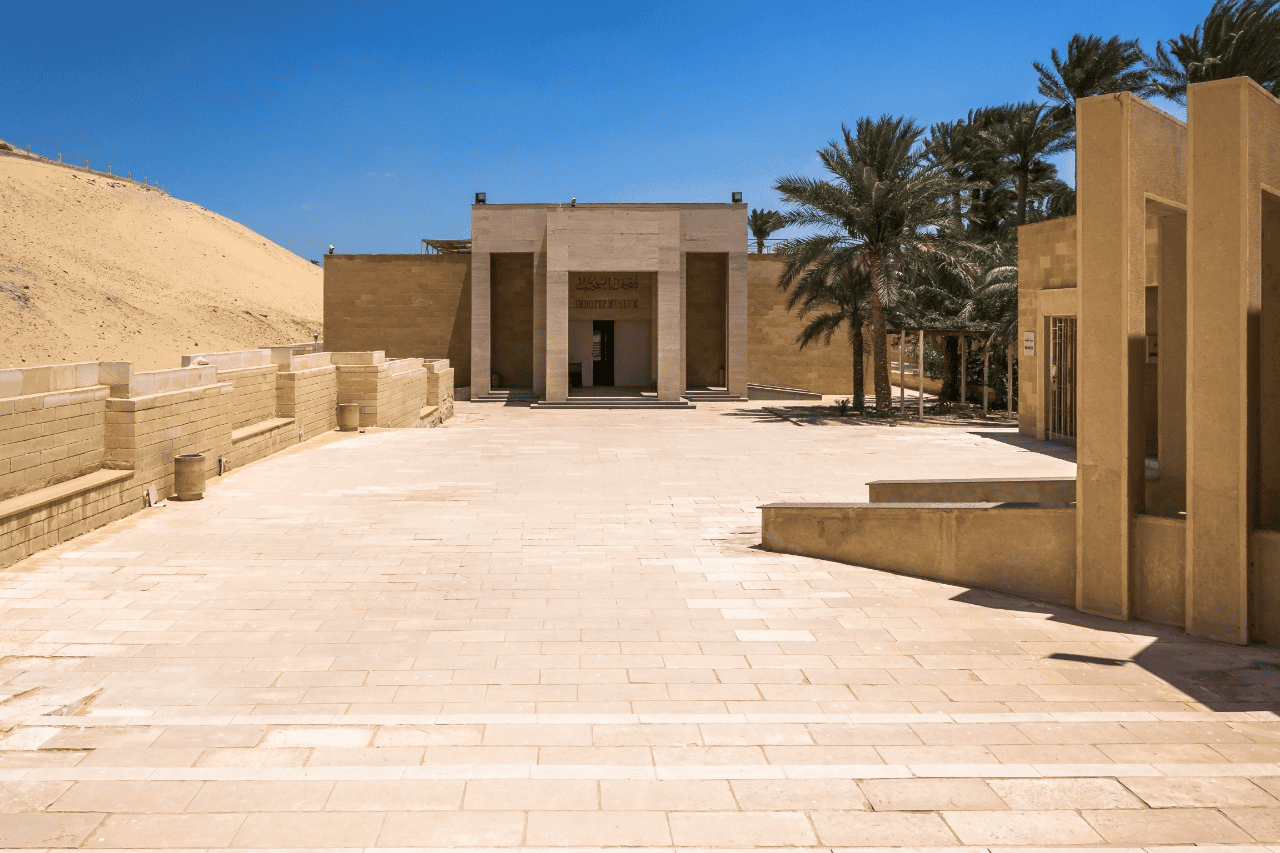
The Imhotep Museum
Named after the Step Pyramid’s architect Check this museum’s collection of mummies, coffins, and other discoveries, including vessels, statues, and the ancient tools used to build the monuments.
The Giza Plateau
Settle into your hotel, get some rest, then head to the Giza Plateau for a morning or afternoon of pure exploration! Most people think the three monumental pyramids are all there is to see, but in fact, they’re merely the biggest structures on site. The Giza Plateau is vast and sprawling, full of structures that include the “satellite” pyramids, queens’ pyramids, mastaba tombs for nobility, the worker’s town and tombs, and mortuary temples built to receive offerings for the deceased kings. You can either stroll through the site on foot or catch a ride on a camel or horse-drawn carriage to experience the adventure above ground.
Dahshur
Things did not always go according to plan when it came to pyramid design and building. If you want to check out a surviving faulty design, Dahshur is the place to go. Pharoah Sneferu wanted to top the accomplishment of Djoser’s pyramid in Saqqara but ended up with a broken lined or Bent Pyramid, named as such due to a fault in the engineering design. Determined to get it right after the failure of the Bent Pyramid, Sneferu ordered the construction of a new monumental pyramid a kilometer away.
Although it was originally encased in brilliant limestone, the Red Pyramid gets its name from its currently exposed layer of rust-colored stone. Becoming the blueprint for pyramid building, it is the third-largest Egyptian pyramid after those of Khufu and Khafre, built later in Giza.
Other structures on site include smaller pyramids from the Middle Kingdom that are currently in a state of erosion. The Black Pyramid of King Amenemhat III still stands, but it’s not well-preserved.
Don’t Miss
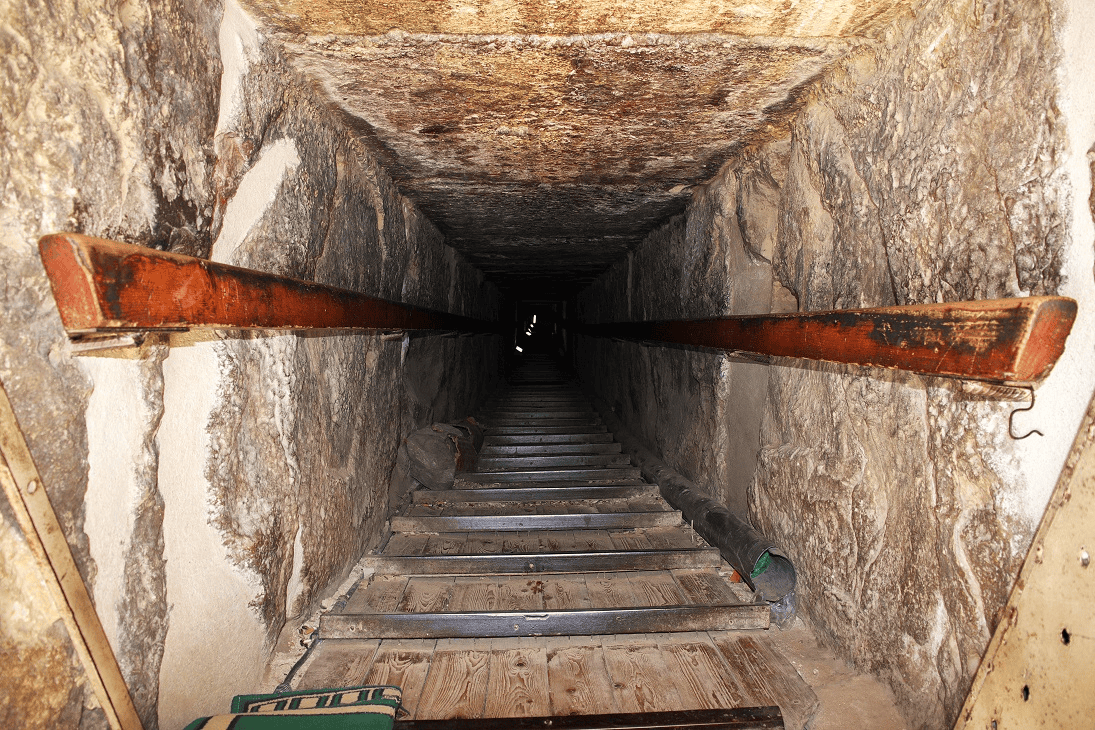
Going inside the Bent Pyramid
And walking through a narrow, approximately 80-meter-long tunnel to reach two chambers deep within the structure.
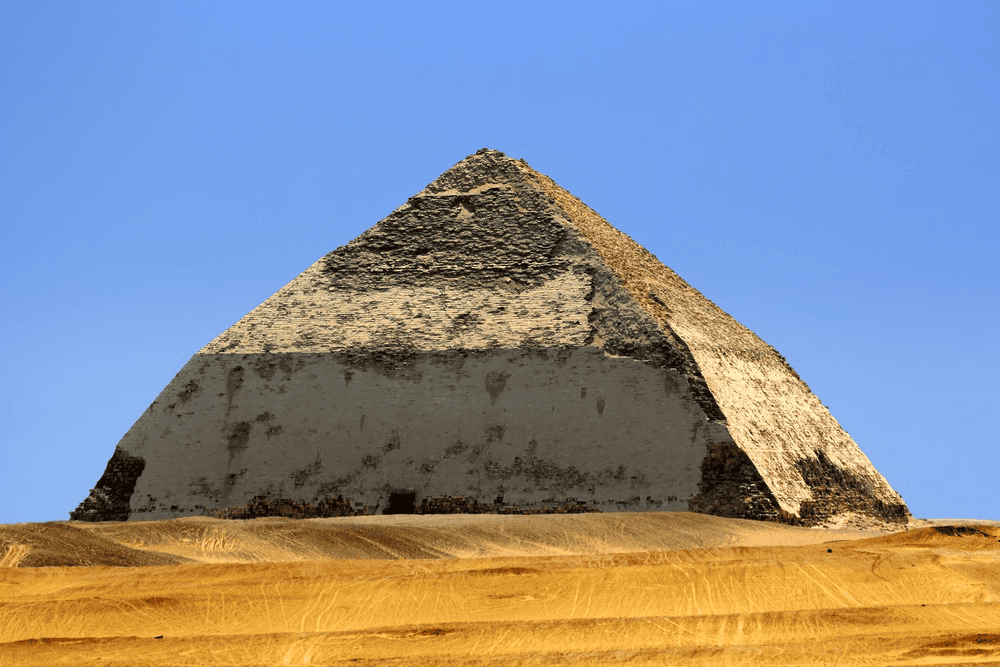
Small Satellite Pyramid
Walking over to the small Satellite Pyramid south of the Bent Pyramid for a unique vantage point where you can see all three of King Snefru’s pyramids in a line—a great photo opportunity!
The Giza Pyramids
These spectacular and awe-inspiring structures make this patch of land one of the most popular tourist destinations in the world! The Great Pyramid, the last of the Seven Wonders of the Ancient World, was built as the final resting place for Pharaoh Khufu more than 4,500 years ago, while the other two pyramids were built later for his son Khafre and grandson Menkaure. Khufu’s pyramid is both the oldest and largest of the three, but his son Khafre’s appears to be just as tall because he built it on slightly higher ground. Another special feature of Khafre’s pyramid is how well-preserved the top of the pyramid remains with its polished blocks of high-quality limestone that are still intact.
Menkaure’s pyramid is by far the smallest of the three due to the limited amount of space that was left on the Giza Plateau and a more laborious choice of building material. Menkaure chose to quarry granite for the casing of his pyramid, which required transport from 800 km away. Eventually, only the bottom quarter of the casing stones consisted of granite, while limestone was used for the rest.
Don’t Miss
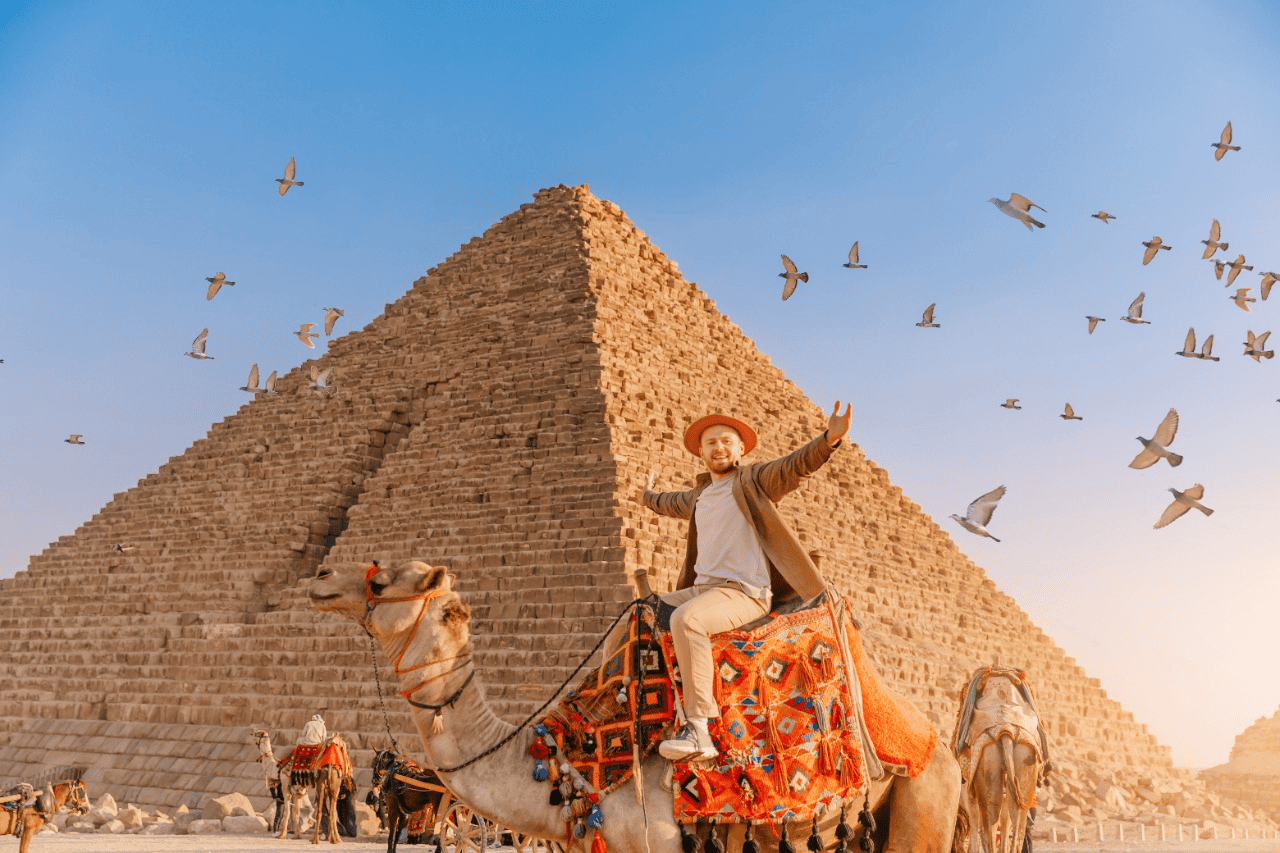
Keepsake photos
Hiring a camel guide to take you to the best spots around the plateau for keepsake photos. There are several great spots from a multitude of angles, guaranteeing amazing shots that include all nine pyramids.
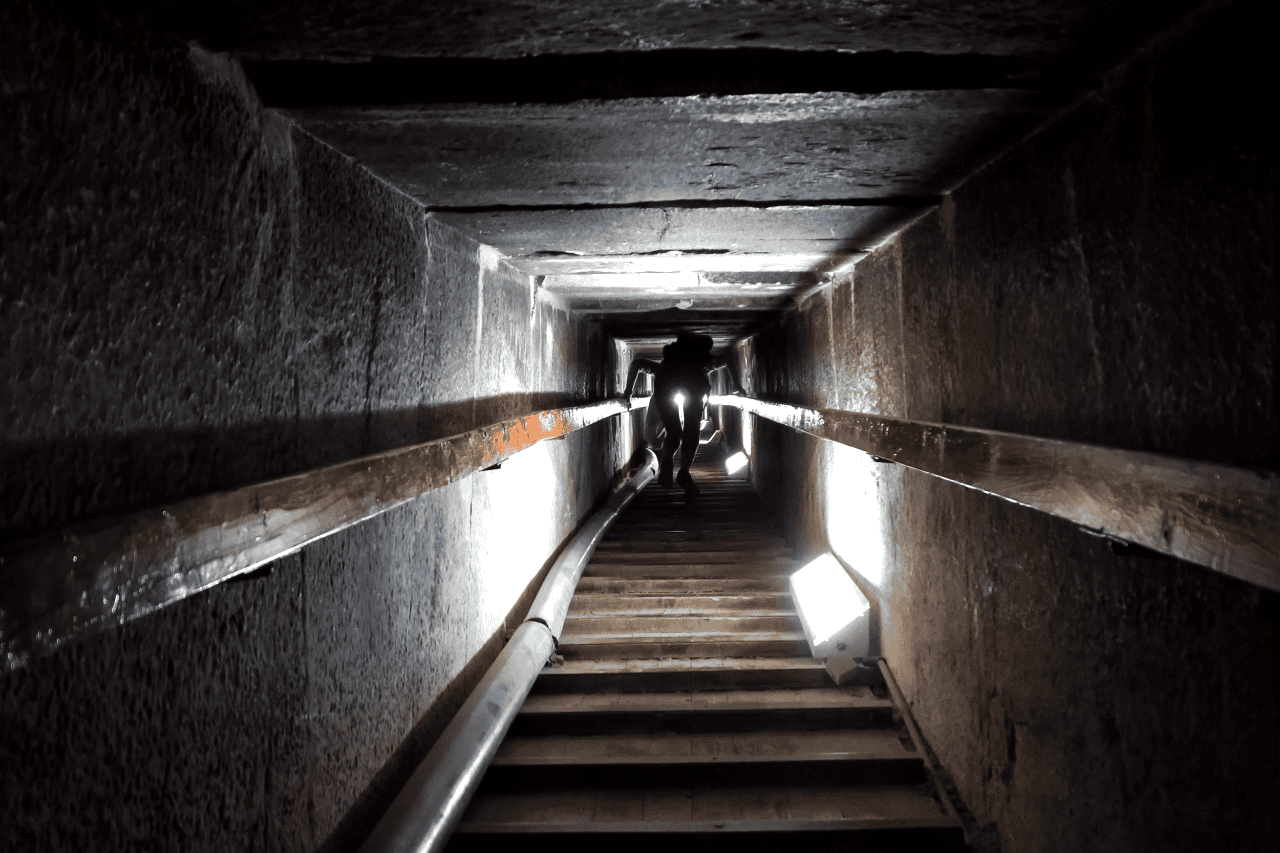
Great Pyramid’s belly
Climbing inside the Great Pyramid’s belly and hiking upward through the Grand Gallery to reach the King’s Chamber, where the sarcophagus in which Khufu once lay can still be seen.
